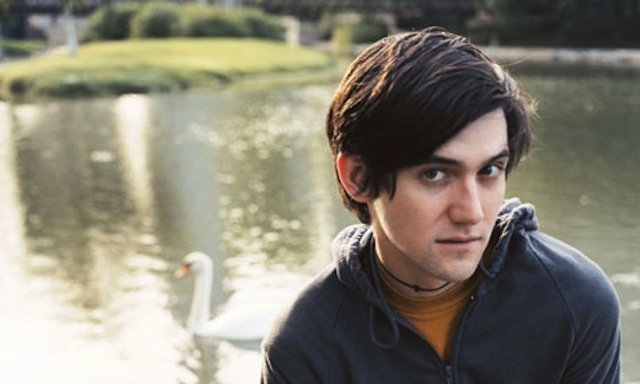Don’t say it was too soon: emo, that kind of embarrassing turn-of-the-millenium blend of punk and sadness that became a definitely embarrassing mainstream sensation in bands like Fall Out Boy and My Chemical Romance, is now back in the form of themed parties for millennials. The Emo Night at Echoplex in LA is already celebrating its two-year anniversary. Jia Tolentino reports on the phenomena for the New Yorker in partial below, in full here.
In the past couple of years, a strange phenomenon has taken hold: tens of thousands of city-dwelling professionals aged twenty-five to thirty-five have started flocking to regularly scheduled parties with the narrow theme of “emo.” Emo, originally short for “emotive hardcore,” is a fluid category that encompasses decades of music: the genre first emerged in the nineties, went pop in the aughts, and has lately settled into a nuanced, indie adulthood. But these themed emo nights look to a specific era: about a decade ago, after pop-punk bands like Green Day and Blink-182 had set the table for the radio-friendly emo acts to come. These later bands were, and remain, easily parodied, offering a combination of flamboyant melodies, furious percussion, and teen-age screams.
During the genre’s mainstream peak, which lasted roughly from 2001 to 2006, there was a popular emo act for every shade of adolescent feeling. My Chemical Romance was imperiously self-deprecating; Fall Out Boy was exuberant; Panic! at the Disco was vaudevillian—and all three went double platinum. Dashboard Confessional was lovelorn and sappy; Jimmy Eat World was cheerfully sincere. Brand New and Taking Back Sunday, jockish rivals from Long Island, sang about self-obsession and spite. The most radio-friendly emo frequency was bounded on one side by darker, post-hardcore bands, like Thursday, and on the other by silly pop-punk acts, like Sum 41, that were mainstream enough to appear on MTV’s “Total Request Live.”
Inside this sweaty, and almost entirely male, musical ecosystem, the simplest emotions bloomed into life-or-death melodrama. Taking Back Sunday described infatuation like so: “You could slit my throat / And with my one last gasping breath / I’d apologize for bleeding on your shirt.” There was a streak of playfulness in emo, but it was the genre’s spectacular sentimental indulgence that really got people on board. It also insured that emo’s biggest fans fell within a certain age range.
A decade later, the emo teens are grown up, sort of, and they are re-immersing themselves in the sound of adolescence—that squeal of medical-grade angst and longing. There are emo nights in Los Angeles, Brooklyn, Portland, Denver, Tampa, Houston, Baltimore, and Boston, among other cities. They are oddly specific celebrations of near-term nostalgia in which music made to help teen-agers flail their way to adulthood provides an opportunity for adults to succumb to the histrionics of teendom again.
The best-known and most heavily branded emo night takes place in Los Angeles on the first Tuesday of every month. Emo Nite LA boasts a cute logo of a cartoon gravestone; high-contrast, mid-aughts-style hipster party photography at every event; and a thriving line of merch. (Its most popular offering is a shirt that proclaims “SAD AS FUCK.”) Blink-182’s Mark Hoppus has d.j.’d the party; in 2015, at Emo Nite LA’s one-year anniversary, Dashboard Confessional’s Chris Carrabba performed an acoustic set. The franchise extends to a handful of other cities; the event’s organizers estimate that, in the past two years, forty thousand people have attended Emo Nite LA events.
In December, Emo Nite LA celebrated its two-year anniversary, at the Echoplex, a popular venue on the east side of Los Angeles. A long line of black-clad party hopefuls stood on the sidewalk outside. It was a more inclusive crowd than you usually see in Los Angeles, as if warring high-school cliques had united for a night. When I went inside the venue, a marching band was playing Jimmy Eat World’s “The Middle,” and the ceiling was covered with “SAD AF” balloons. To my right, a pair of husky lurkers talked about the Promise Ring; to my right, three girls who appeared to be dressed for social media Snapchatted themselves singing along to “Mr. Brightside,” the 2004 hit by the Killers, which was playing over the speakers. The Killers were not emo.
*Image of Conor Oberst via Noisey

